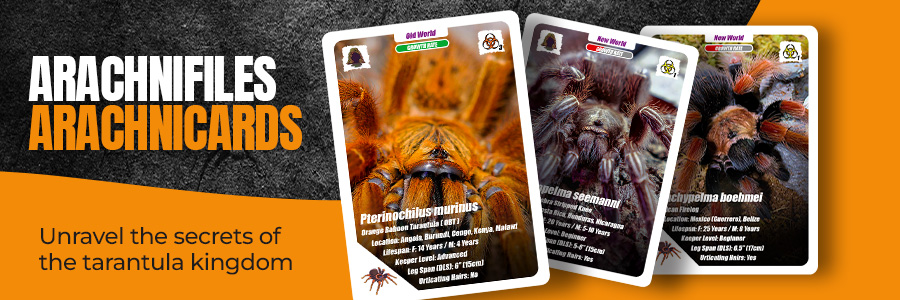Pterinopelma sazimai also known as Brazilian blue tarantula
The Brazilian blue tarantula, also known as Pterinopelma sazimai, is a stunning New World tarantula that can be found in the Bahia and Minas Gerais regions of Brazil. Unfortunately, due to deforestation, wildfires, urban sprawl, and farming, the tarantula’s habitat is shrinking, making it an endangered species in its native location. As a result, it is essential to purchase captive-bred tarantulas from reputable dealers.
Info Overview
Genus: Pterinopelma
Species: sazimai
Living Height: Terrestrial, Opportunistic burrower
Urticating Hairs: Yes
World Type: New World
World Location: Brazil, Bahia, Minas Gerais, Chapada Diamantina
Leg Span (DLS): 5.5-6” (14-16cm)
Life Span: F: up to 12 years M: up to 3 years
Growth Rate: Medium
Keeper Level: Intermediate
Environment
The Pterinopelma sazimai is highly adaptable to its environment, experiencing heavy rainfall and long periods of little moisture. They burrow deep when looking for heat relief or increased humidity, so it is necessary to provide them with a depth of substrate. While they may show defensive behaviors and throw a threat posture and kick hairs, they are not suitable for beginner tarantula keepers.
Enclosure
To raise spiderlings, keep them in basic spiderling enclosures with a damp substrate, tiny water dishes, and small hides. As the tarantulas mature into juveniles, transfer them into acrylic terrestrial juvenile enclosures with cross ventilation, a cork bark hide, and a slightly damp substrate. For sub-adults and adults, move them into 2.5-5 gallon style enclosures with tightly fitting lids, coco fiber, or another suitable substrate, water dishes, hides, and decorations.
Feeding
In terms of feeding, give spiderlings a small cricket or roach twice a week, removing any unwanted prey by the next day to avoid mites and mold. For juveniles, feed them 2-3 medium crickets or two small roaches once a week. If the tarantula is in premolt, offer prey and remove it within 24 hours if it has not eaten it by then. Wait 2-3 days after a molt before attempting to feed again.
Conclusion
In summary, the Pterinopelma sazimai is an incredible tarantula species that requires proper care and attention. By ensuring that they have suitable living conditions and proper feeding, they can thrive and be a beautiful addition to any tarantula keeper’s collection.
Other Helpful Info!
If you found this post helpful, please consider sharing it. It really helps the site in the search algorithm! Thanks!
Do you have inverts and arachnids? Want a fun way of tracking them? Then download Arachnifiles for Android or iOS today! It’s free!
Want to read more about invertebrate care? Click here to view other care guides!
If you’d like to watch The Tarantula Collective talk about this tarantula, you can watch it here!




